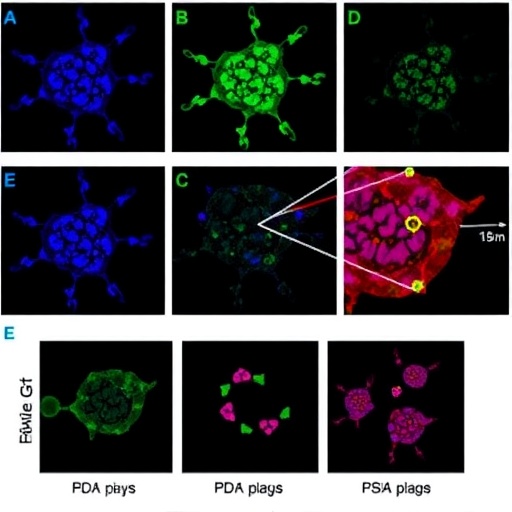In a groundbreaking study conducted by researchers at Uppsala University, crucial insights have been gained regarding the mechanisms by which the Semliki Forest virus infiltrates the central nervous system. Their findings reveal that the virus first infiltrates the cerebrospinal fluid before binding to specific cell types, leading to its potential use as a therapeutic agent for brain cancer. This research, published in the prestigious journal Nature Communications, marks a significant advance in virology, particularly in the fight against neurological diseases.
Recent advancements have identified the Very Low-Density Lipoprotein Receptor (VLDLR) as the primary receptor enabling the Semliki Forest virus to enter host cells. While VLDLR’s role in facilitating viral entry is established, its expression is absent in the blood vessel cells that constitute the blood-brain barrier. Thus, the researchers aimed to uncover alternative pathways through which the virus may cross into the central nervous system. Their discoveries confirmed the importance of choroid plexus cells, which are responsible for producing cerebrospinal fluid, as the entry point for the virus.
The research team utilized advanced methodologies to validate their hypotheses, confirming that the transport of the Semliki Forest virus across the choroid plexus epithelial cells is heavily reliant upon the VLDLR receptor. Interestingly, this mode of entry has previously been documented for other viruses, such as Zika and SARS-CoV-2, indicating a potential commonality in the way viruses exploit this particular route to invade neural tissues. This study’s findings provide the first evidence that the Semliki Forest virus shares this neuro-invasion pathway, suggesting an evolution in our understanding of viral mechanisms.
The implications of this research extend well beyond the basic virology of the Semliki Forest virus. Given that oncolytic viruses are being explored as a novel immunotherapy for cancer treatment, the capacity of the Semliki Forest virus to penetrate brain tissues opens exciting avenues for its potential application in treating aggressive brain cancers, particularly glioblastoma. Oncolytic virotherapy leverages the natural ability of certain viruses to selectively infect and lyse cancer cells while simultaneously stimulating the immune system to enhance anti-tumor responses.
The response of the immune system to different viruses was also assessed in the study. Remarkably, the Semliki Forest virus demonstrated superior capabilities in activating immune responses compared to other viral candidates. Although the therapeutic application of the Semliki Forest virus in cancer treatment has not been rigorously evaluated in clinical settings to date, the findings suggest a promising future for its development as an oncolytic agent.
As researchers continue to unravel the complexities of how the Semliki Forest virus interacts with neural tissues, they aim to refine the delivery mechanisms of this viral agent for use in clinical trials. In light of their findings, the research team is optimistic about the possibilities that lie ahead for the therapeutic use of the Semliki Forest virus. The goal is to target severe brain tumors, such as glioblastoma, and utilize the virus’s unique capabilities in a therapeutic context.
Notably, the synergy between virology and oncology demonstrated in this research raises essential questions about the future of cancer treatment modalities. As scientists harness the mechanisms of viral entry and replication, they inch closer to developing innovative therapies that could transform care for patients with resistant brain tumors. The hopeful perspective is that the insights gained from this intricate interplay of viral biology and cancer treatment could lead to groundbreaking advancements in oncolytic virotherapy.
In summary, the work conducted by the Uppsala University researchers sheds light on a pivotal breakthrough in understanding how the Semliki Forest virus navigates the central nervous system. Their identification of choroid plexus cells as a gateway for viral entry and the confirmation of VLDLR’s role in this process enhances our knowledge of neuro-invasion mechanisms. These insights not only deepen our comprehension of viral behavior but also present exciting possibilities for the development of viral therapies aimed at combating severe neurological conditions, particularly cancers of the brain.
As this field of research progresses, continued collaboration among virologists, oncologists, and immunologists will be essential. The integration of findings from such multidisciplinary teams fosters innovative approaches that can ultimately lead to the realization of effective viral therapies tailored to target and eradicate cancer cells while activating immune defenses in patients. The excitement surrounding this research underscores the hopeful future that lies ahead in virology and cancer treatment, paving the way for breakthroughs that could change the landscape of medical science.
Subject of Research: Animals
Article Title: VLDLR mediates Semliki Forest virus neuroinvasion through the blood-cerebrospinal fluid barrier
News Publication Date: 23-Dec-2024
Web References: DOI link
References: N/A
Image Credits: Mikael Wallerstedt
Keywords: Semliki Forest virus, VLDLR, neuroinvasion, oncolytic virus, glioblastoma, cancer treatment, immunotherapy, virology, cerebrospinal fluid, Uppsala University, Nature Communications, viral mechanisms.





